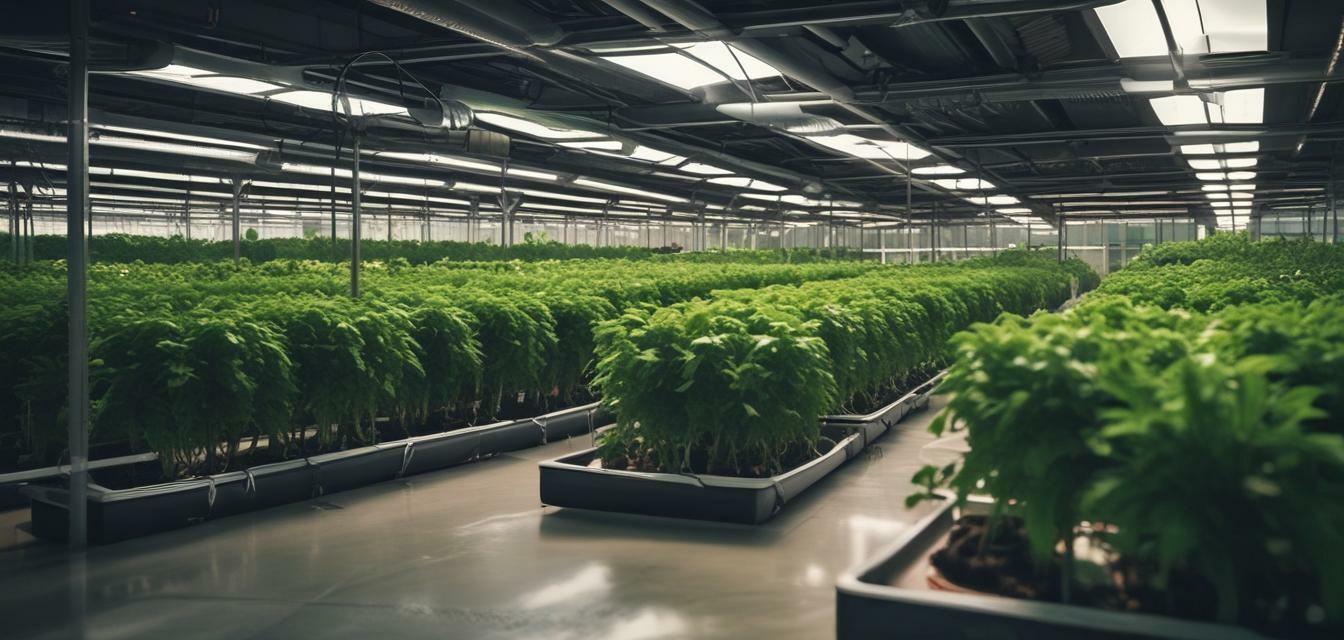
The Future of Hydroponic Farming: Trends to Watch
Key Takeaways
- The hydroponic farming sector is rapidly evolving with advancements in technology.
- Sustainability practices are becoming crucial for future farming methods.
- Accessibility to hydroponic systems is improving, making it easier for urban dwellers and small-scale farmers.
- Consumer demand for locally grown produce is driving innovation in hydroponic practices.
- Integration of smart technologies is enhancing the efficiency of hydroponic farming.
In recent years, hydroponic farming has gained significant traction as a method of growing plants without soil, utilizing nutrient-rich water. With the world facing challenges such as climate change and limited arable land, the future of hydroponic farming looks promising. In this article, we will explore the emerging trends that are shaping the future of hydroponic agriculture.
1. Technological advancements in hydroponics
Technology continues to revolutionize the agricultural landscape. Here are some trends to watch:
| Technology | Description | Impact on Hydroponic Farming |
|---|---|---|
| Automated Systems | Systems that automate nutrient delivery, lighting, and environmental control. | Reduce labor costs and increase yield by optimizing growing conditions. |
| Smart Sensors | Sensors that monitor plant health, nutrient levels, and environmental conditions. | Provide real-time data for informed decision-making. |
| Vertical Farming | Utilizing vertical space in urban areas for efficient land use. | Maximize production in limited spaces. |
2. Sustainability practices in hydroponic farming
As environmental concerns grow, so does the focus on sustainable practices in hydroponic farming. Key areas of interest include:
- Water conservation through closed-loop systems.
- Utilization of biodegradable growing media.
- Energy-efficient lighting and climate control.
Benefits of sustainability in hydroponics
Implementing sustainable practices brings multiple advantages:
| Benefit | Description |
|---|---|
| Reduced Resource Use | Less water and energy consumption compared to traditional farming. |
| Lower Carbon Footprint | Decreased transportation and waste emissions. |
| Increased Food Security | Ability to grow food in otherwise unproductive regions. |
3. Accessibility and urban farming
Urban farming is on the rise, and so is accessibility to hydroponic systems. More people are turning to hydroponics as a solution for growing their own food, especially in metropolitan areas. This trend is promoting:
- Community gardens and shared growing spaces.
- Do-it-yourself hydroponic kits for home use.
- Educational programs focused on hydroponics.
Future of urban hydroponics
With increasing demand for locally grown produce, urban hydroponics is becoming a feasible solution for:
- Reducing food miles and ensuring freshness.
- Providing urban dwellers with access to fresh produce.
- Diverse planting options, including exotic fruits and herbs.
4. Market demand and consumer trends
Market demand for hydroponically grown produce is expected to skyrocket. Factors contributing to this demand include:
- Growing awareness of the benefits of fresh, organic food.
- Increased interest in home gardening solutions.
- Health consciousness around avoiding pesticides and chemicals.
5. Integration of smart technologies
Smart technologies are becoming integral to hydroponic farming. Here’s how:
| Technology | Current Use | Future Potential |
|---|---|---|
| AI in Farming | Data collection for optimal growth conditions. | Predictive analytics for better yield forecasting. |
| Blockchain | Traceability in food supply chains. | Enhancing transparency in sourcing. |
| IoT Devices | Monitoring of environmental conditions. | Automating growing processes in real-time. |
Conclusion
Overall, the future of hydroponic farming is bright, with sustainability, accessibility, and technological advancements paving the way for a more efficient and environmentally friendly agricultural method. By keeping abreast of these trends, farmers, urban dwellers, and enthusiasts alike can take part in this exciting movement toward a more sustainable food system.
Tips for getting started with hydroponics
- Start small with a simple hydroponic kit.
- Research the best plants for hydroponic systems.
- Experiment with growing methods like NFT or DWC.
- Stay informed about technological trends in hydroponics.
- Join a community or online forum for shared knowledge.
Pros
- Efficient use of space and water.
- Ability to grow year-round.
- Less exposure to soil-borne pests and diseases.
Cons
- Initial setup costs can be high.
- Requires knowledge and management of nutrient solutions.
- Potential technology dependency.
For more insights on hydroponic systems and other aspects of indoor gardening, check our News and Trends section or explore our Grow Lights, Hydroponic Systems, and Nutrient Solutions for more information.

